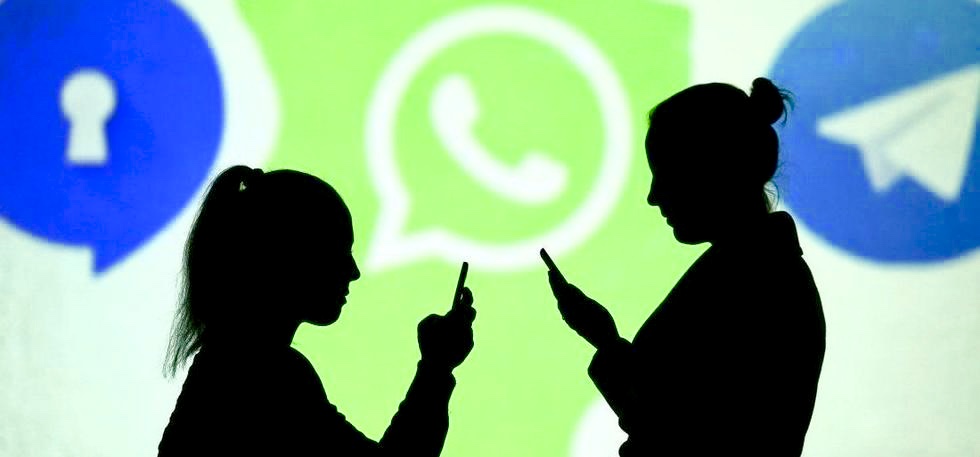Amid the technology shift, the evolving virtual world is coming with its lingo in symbols and texts. A work in progress, and it will take a long time to accommodate the traditional etiquette systems. Till then, many social media users may face music and survive with hurt, writes Maleeha Sofi

“Dispelling a delusion can often lead to greater wisdom than acquiring a truth,” asserted Ludwig Borne, echoing sentiments that social media has embraced as it proclaims, Delulu is the new solulu. After Apple and Blackberry reincarnated as technology products while being fruits, Amazon the biggest retailer while being a river and Firefox a browser as well as an animal, a prevailing trend suggests adoption of delusions is the path to a tranquil existence in the digital world order.
This colloquial shift is one among many on social media platforms, notably Instagram and Facebook, creating not only a linguistic divide across generations but also within the same generation. Beyond language barriers, virtual communication introduces challenges in sensitive realms.
Evolution of Language
Communication is a dynamic process that readily appropriates new vocabulary. The integration of technological advancements has accelerated the evolution of terminology. “Communication and language systems have evolved since the inception of the universe,” Tawseef Majeed, a professor at Jamia Milia Islamia specialising in Communication, notes. “Open-mindedness to incorporating new knowledge, practices, and slang enhances language systems.”
This openness is reflected in the selection of Gaslighting as Merriam-Webster Dictionary’s Word of the Year for 2022. This term, describing a form of psychological abuse that leaves victims questioning their reality, gained prominence through social media. However, not all evolving terminology aligns with ethical standards. Phrases such as fatherless behaviour, homeless, and red flag circulate on social media, labelling individuals based on perceived immorality, impacting those connected to these phrases.
Nuanced Perspectives
Jasira, 24, is pursuing an MBBS. She is unhappy with the emergence of fatherless behaviour on social media as a negative adjective. Having lost her father over a decade ago, she acknowledges the nuanced perspective, it introduces but also warns of the complex emotions it stirs. Jasira emphasises the importance of recognising the multifaceted nature of emotional responses to loss, cautioning against broad generalisations.

A video on Instagram or Facebook featuring a girl dancing or riding a two-wheeler often prompts comments like homeless or fatherless. However, these words carry weight and depth that may elude those making casual judgments. A young man, who lost his father at the age of seven, dismisses the phrase fatherless behaviour as ‘bogus’. He speaks from personal experience, having faced struggles with post-traumatic stress disorder (PTSD) and Attention Deficit Hyperactivity Disorder (ADHD). To him, those using the phrase casually fail to comprehend the profound pain and consequences of losing a father, rendering their words thoughtless and insensitive.
The Virtual Communication
In navigating the evolving landscape of virtual communication, a delicate balance is needed to foster understanding without perpetuating harmful stereotypes or oversimplification.
Flagging or rectifying immoral behaviour in society should not involve resorting to slander. Instead, the focus should be on correcting the behaviour itself, as merely labelling someone as “fatherless” lacks meaningful impact, noted a respondent.
The endorsement of new terminologies by linguists and anthropologists is imperative. Ensuring that message intent remains untainted by harmful or erroneous terms requires a thorough evaluation of word usage, emojis, and syntax for more meaningful communication.
Influencing Virtual Platforms
Virtual platforms, each with its community of consumers and producers, rely on influencers to sustain their algorithms. These influencers, through trends and recommendations, significantly shape the behaviour of the majority of users. A study by Karima Lajnef in Tunisia, using cognitive mapping, identified the interconnected influence of social media influencers’ distinctive features on teenagers’ behaviour.
Aiman, 21, highlighted the prevalence of projecting an idealised version of one’s life. This trend, fuelled by influencers, contributes to a pervasive sense of inauthenticity across online platforms. Labels such as ‘be a Sigma male’ or ‘stay toxic queens’ convey specific lifestyles through comedy or self-help, finding acceptance among the majority and potentially influencing their thoughts and behaviours.
 Emphasising the persuasive power of social media trends, Aiman noted that individuals may feel compelled to undertake challenging tasks due to their overwhelming impact. The pressure can lead individuals to surpass their moral boundaries, driven by a strong desire to conform to prevailing trends on social platforms.
Emphasising the persuasive power of social media trends, Aiman noted that individuals may feel compelled to undertake challenging tasks due to their overwhelming impact. The pressure can lead individuals to surpass their moral boundaries, driven by a strong desire to conform to prevailing trends on social platforms.
Dr Nookaraju Bendukurthi, a professor at the Central University of Kashmir and an extensive researcher in Communication, observed that social media has turned everyone into actors, sharing only positive aspects of their lives. The platform’s portrayal often neglects the acceptance of failures, despite failures being an integral part of the human journey. The pressure to conform and project success can lead to a skewed representation of reality on social media.
Cultural Shifts
In recent years, social media has emerged as a dominant form of communication, facilitating both verbal and nonverbal exchanges. According to the 2021 Global State of Digital report, the worldwide social media user count has surged by 490 million, reaching 4.20 billion compared to the previous year (2020). This widespread adoption has led to a transformation in the way people express their cultures, with a global audience quick to embrace these shifts. Notably, traditional garments like Pherans have given way to oversized clothing inspired by Korean culture.
Social media user, Sadiya Wani, 26, lamented the fading presence of Kashmiri culture. “Every nation has its own identity, and when these shifts occur, there is a significant erosion of our cultural roots,” Wani observed that despite Kashmir being a predominantly Muslim region, the representation on social media presents a stark contrast.
The convergence of diverse cultures on social media has been met with widespread acceptance. “Cultural appropriation is a subset of a broader cultural imperialism, primarily practised by the West, and unfortunately, they are making significant inroads,” she asserted.
Positivity Versus Negativity
While advocating for the right to free expression, the boundaries within which this freedom should operate often become obscured. Social media users champion the cause of authenticity, but there is a lack of scrutiny regarding the appropriateness of these expressions. Discussions around body positivity encourage acceptance of one’s body, yet it is essential to acknowledge the importance of maintaining physical health and fitness. Striking a balance becomes crucial, as individuals should not endorse unhealthy extremes, whether malnourishment or obesity.

The promotion of straightforwardness in communication is another facet, but the challenge arises when individuals neglect to exercise discretion to avoid causing harm. Filtering language to prevent the unintentional infliction of emotional distress is imperative in maintaining a healthy and respectful online discourse.
Virtual Expression
Throughout history, media has served as a conduit for communication, from early cave and stone paintings to the advent of sign language. Technological innovations, from the telegraph to television, have continually transformed the nature of communication.
The mobile phone and subsequently social media are acknowledged as pivotal in this evolution, shifting communication from silence to dialogue. However, the advent of virtual communication, with features like React to the message, has reintroduced a semblance of silence, where individuals respond with emojis without substantial interaction. While virtual communication is efficient, its impact may not match the effectiveness of real-world exchanges, as it often mirrors or imagines characteristics from the physical world.
“Despite the pervasive influence of digital technology, the fundamental purpose of communication remains unchanged – to convey a message,” Tawseef Majeed emphasises.

Emojis: A Visual Language
Emojis, now an integral part of digital communication, find their roots in the work of Japanese designer Shigetaka Kurita in 1999. Influenced by Japanese manga and anime expressions, emojis have become a universal visual language. With over 3000 emojis in the Unicode Standard, their potential for both effective communication and miscommunication is vast. Users, including a postgraduate Mass Communication student, turn to GIFs and WhatsApp stickers for nuanced expression, considering them essential tools for effective virtual communication.
According to a Slack Research study, 67 per cent of respondents feel a closer bond when the other person understands the emojis they use. However, 58 per cent admit to being unaware of certain emojis having multiple meanings. Some users believe emojis can substitute follow-up messages.
Tawseef Majeed raises concerns about the disconnect arising from overwhelming digital communication practices. Despite feeling connected virtually, true emotional sustenance and relationship building necessitate human communication beyond the digital realm. Majeed notes that the interpretation of emojis can vary among individuals and their meanings may be more subtle and contextual than presumed.
Bendukurthi underscores that communication continually evolves, and virtual communication, while widespread, creates a digital divide as not everyone is literate in social media communication. He expresses concern about the younger generation losing their imaginative capacities, becoming passive viewers instead of creative contributors.















